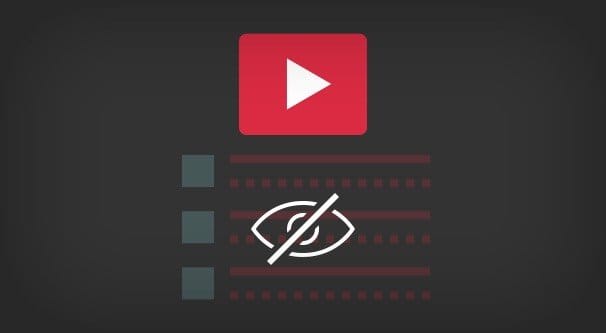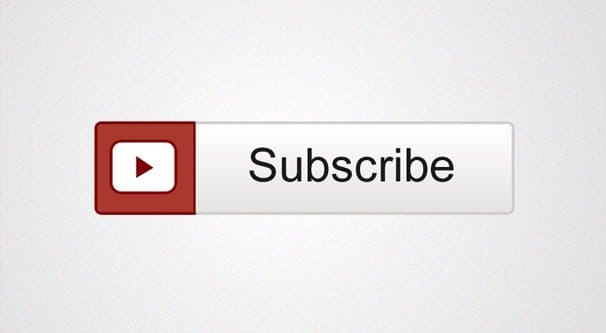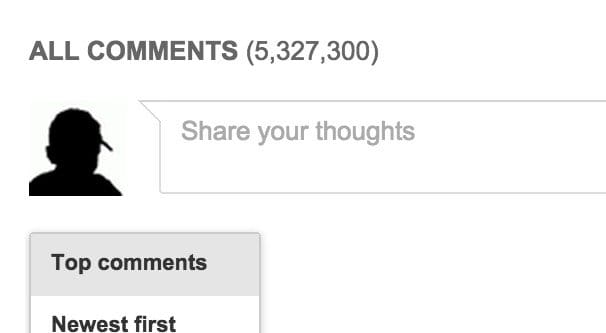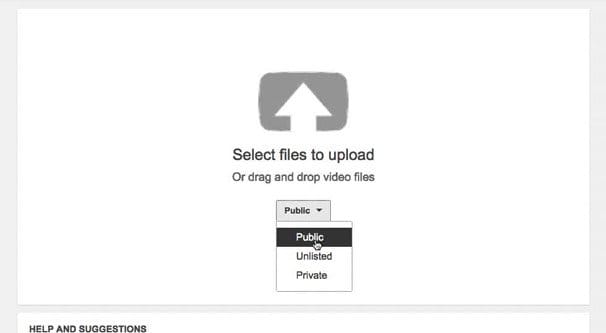 Written by ContentPowered.com
Written by ContentPowered.comI know this has been discussed with blogs before, but YouTube is a different beast. You can disable comments if you like, but is there a good reason to do so? As with many aspects of the world, there are both good and bad arguments to be made.
Reasons to Disable Comments
I’m going to be up-front here; I consider it a pretty bad idea to disable comments. There is no problem you can solve by disabling comments; it’s more like a band-aid on a severed finger. You have much bigger problems, and while the brief respite might help in the short term, chances are it’s going to be worse if that’s the only action you take.
That said, I’m starting off making what arguments I can in favor of disabling comments. Believe it or not, there are a few small reasons you might want to cut out comments on individual videos. I can tell you right now though, you probably don’t want to try disabling comments across your entire channel.
You’re expecting a lot of bad press. This is probably one of the number one reasons why people disabled comments on their channel. When a brand, a streamer, a vlogger, or whoever is involved in a scandal or just gets caught up in some controversy, it’s possible that they’ll be dogpiled by negative comments from people looking to hurt the channel in any way they can. PewDiePie, notorious for some pretty shitty opinions, disabled his comments for a while. And, frankly, any time you read a blog’s comments or a video’s comments when it’s reasonably popular and controversial, you can see why the creator might not want that kind of content on their site.
Your video is about something controversial. Sometimes you know you’re posting a video about a controversial topic. Gun control, LGBT politics, abortion, these kinds of topics tend to attract a very vitriolic and very abusive audience. You’re almost guaranteed to receive a ton of comments from people arguing with each other about both sides. Worse, since they’re topics that are very important to many people, both sides get very heated. You may want to disable comments on a specific video to avoid having to moderate such a discussion.
You have a spam problem and don’t want to moderate it. YouTube does have some automatic spam moderation features, but they aren’t foolproof. If one particular person or group of people is determined to spam the comments on your videos, some of them are going to slip through. By disabling comments – and ratings – you can minimize the damage these people can do. You can also ban them from commenting, but that only helps if they aren’t willing to make more accounts.
You want to encourage interaction in a private forum. This one is a little cheeky. If you’re starting your own private community, like a web forum or a Facebook or LinkedIn Group, you could use YouTube to promote it. Tell people if they want to comment on the video, they can go to your community and post there. You can even post the videos for discussion in your group and link to them in your YouTube description. You’d have to test to see if a strategy like this would work, for sure.
The video is for internal use and you don’t want the general public seeing it. Disabling comments means that if someone does find the video, they can’t disrupt your internal processes with comments. Of course, you’re probably going to want to keep the video unlisted in the first place, and you can set the comments to “require moderation” in order to minimize spam, so there are options other than disabling comments entirely.
Reasons to Keep Comments Enabled
The reasons you might have for disabling comments are generally bad, unfortunately. Pitching a private community can be done without disrupting an existing community. Dealing with spammers and general malcontents can be done in other ways, with other tools YouTube gives you. Plus, there are a lot of good reasons to keep comments enabled, even if it is a little more work than you might otherwise think.
It fosters a community on your channel. YouTube is, after all, a social network. You can host video yourself or throw it up on Vimeo or something if all you need is a video host. The reason businesses use YouTube is because there are millions upon millions of people using YouTube, all of whom could be exposed to your content. You’re looking to get these people following your channel and participating in your community
It enables discussion about the topics at hand. Just like comments on your blog, fostering a discussion about your topic is excellent for all kinds of value. You get influencers and interested parties in discussion on your page, you have the opportunity to showcase your authority, and you’re able to get to know people who frequently comment on your videos. You have to spend some time moderating comments to make sure discussion stays on track, though, and you have to spend the time interacting with users the same way you do on other social networks and in your blog comments.
It gives you criticism you can use to improve. I know it doesn’t seem like it at times, but you can actually receive valid criticism from YouTube comments. Most people can recognize mistakes, even if they don’t quite understand how to convey the problem in a constructive manner. I saw a video where the audio quality was terrible, like “webcam mic from 1995” terrible, and a comment was “what flavor was the popsicle you used to record your audio?” It’s a funny comment, it’s not constructive, but it certainly conveys that there are audio issues in your videos and you might want to look into them.
It gives you ideas for future videos. In the process of discussion on a video, people might bring up questions that are complex or that you don’t have the time to answer in a comment. These are opportunities to answer that question in a blog post or in a future video. You can also be inspired to talk about other topics, either by someone bringing the topic up in passing, or by someone just saying “hey you should make a video about X.” The fact is, a lot of inspiration can come from YouTube comments, even if a lot of comments aren’t going to be very valuable in and of themselves.
Video engagement is a big part of the YouTube algorithm. In addition to the number of views and the number of positive ratings on a video, view length and engagement are both elements that go into deciding when a video trends. A trending video shows up in the recommended videos list and can mean the difference between 100 views and 10,000 views on a video. Comments are engagement, which is good, and often times people will move to comment while the video is still playing. That boosts the view length, even if it’s only by a few seconds. Getting engagement also keeps people coming back, which has an impact as well.
Disabled comments seem like you’re hiding from users. In a bit of psychology, most users understand that there’s not a really good reasons to disable comments on a video. Most of the time, they assume if you’re disabling comments, it’s because you have something to hide. If a business closes the ability to leave them reviews, it’s generally because they’re getting too many negative reviews and want to stem the tide. With negative comments, the same thing happens. Businesses try to hide, but all it does is make people more suspicious.
Alternatives to Disabled Comments
Rather than simply disabling comments, you can take some other techniques instead. There are middle grounds, other things you can do to try to solve problems you might have, rather than going all-in with the comment disabling. Your channel will look better, you’ll be able to benefit from engagement you get, and you’ll only have to spend a little time with moderation.
Post the video as unlisted. I mentioned this above, but you’re able to publish a video as unlisted if you want to use it solely as an embed on your site, use it in an internal site, or use it in a private community. You don’t need to have a public-facing version of the video. Anyone who has the link can still find it, of course, so it won’t be completely private. That said, it can be a pretty good way to cut down on random spammers that just come through any video they see.
Set comments to require moderation. There are actually a lot of different forms you can set comments, other than free for all or disabled entirely. Here’s a rundown.
- Free for all. This is the default, which allows anyone to comment on your videos and requires you to go in and manually remove comments you don’t want. It’s still subject to the base YouTube spam filters, though, so some particularly bad comments require review before they’re visible.
- Hold for approval. In the advanced settings for a video, under comments, you can choose “approved” under “allow comments.” This setting means any new comments that are posted on your video require your approval before they are published. This is the most time consuming version of comment moderation.
- Hold links for approval. In your creator studio, under community settings, you can find a section that allows you to hold new comments with links for approval. This is an account-wide setting that holds any comment until you approve it, if that comment has a link. It cuts down on link spam without cutting down on organic comments.
- Inappropriate comment filtering. You can opt in to this program, which uses a word filter YouTube maintains to hold any potentially vulgar comment for review. It’s triggered based on English words and does not work for other languages, and it’s still a hold for review, not a complete filter, so you can still approve the comments. You can also add words to the filter if you find some terms objectionable that are not caught in the default filter.
You can use each of these settings in tandem as well. Each setting is in a different part of your YouTube dashboard, and can all apply at the same time if you want.
Shadowban obnoxious users. When you see a comment you don’t like, and you recognize the user as an especially egregious violator of your rules, you can remove the comment. The problem with simply removing a comment, however, is that the user can just post it again. The solution to this problem is the “remove user from channel” option. This option is a shadow ban; the user still sees their comment published on your video, but no one else who visits can see it or reply to it. Ideally, this means the troll feels they’re being ignored and won’t continue posting to try to get a rise out of you.
Appoint a comment moderator. The final option you can use is to simply hand off moderation to someone else that you trust. Anyone else who has a channel – which is simple to set up, and there are no minimum requirements – can be appointed as a comment moderator.
Comment moderators only have one ability. If they see a comment that they feel is inappropriate for your channel on one of your videos, they can click a button and report it for removal. You, as the channel admin, can then go in and choose to either re-publish the comment or remove it. It goes to the same comment moderation queue as comments that are held automatically by any of the moderation settings.
So, as you can see, there are not many reasons to disable comments entirely. I just don’t recommend it.






Sorry but I don’t want to hear criticism. My job is to post videos, not be cyberbullied.
Same
I’m a professional singer, and also a sensitive soul. A mean comment can make me go into hiding for months. I’m surprised you didn’t list this. It’s probably the number 1 reason people disable comments. Most of us are sensitive, especially with our own art. Yet I want to get out there more….
I can relate to that
If I come across a video that has comments disabled, I will hit the dislike button on general principle and then leave immediately, even if it looks like I would otherwise enjoy the video. Shutting down discussion like that is unacceptable to me.
I totally agree with you man!! It really grosses me out when I see it to be honest. When people like vloggers do that it tells me they are up to something that’s maybe very destructive to our well beings and maybe even younger children who need to be kept safe!!!!